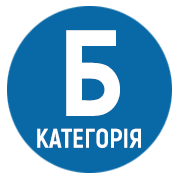APPLICATION OF THE CASE METHOD IN THE PROCESS OF STUDYING THE COURSE “METHODS OF MATHEMATICAL PHYSICS”
DOI:
https://doi.org/10.25128/2415-3605.23.1.21Keywords:
case, method of cases, hyperbolic equations, mixed problem, minimum conditionsAbstract
The article considers the use of case-study method while studying of the topic “Equations with partial derivatives of the hyperbolic type” from the course “Methods of mathematical physics”. The requirements for the educational institutions are outlined in accordance with the concept of mathematical education in Ukraine. The emphasis is placed on the system-activity approach to the learning process. Attention is focused on the necessity to use the method of problem-based learning and one of its forms – the case method. There has been analyzed the concept of a case. There have been described the advantages of the case-study method and the system of requirements for it. There has been revealed the importance of choosing the topic “Equations with partial derivatives of the hyperbolic type” related to its applied nature. The article demonstrates the main stages of the research work of students of the Faculty of Physics and Mathematics in establishing the minimum conditions for the solvability of a mixed problem for a linear homogeneous hyperbolic equation. The paper also identifies and characterizes the main groups of results to be processed. The investigation indicates the selection criteria that help to establish the minimum conditions for the existence of a solution of a mixed problem for a linear homogeneous hyperbolic equation. The results of the research are presented in the form of a table. The research presents the main statements recognized as the best conditions corresponding to the set goal of the study. The originality of the method of proving statements and the skillful combination of two important topics of the course “Methods of mathematical physics” – “Equations with partial derivatives of the hyperbolic type” and “Integral equations” are noted. Application of the case-study method makes it possible to activate the learning process, to form positive motivation and to renew the creative potential of teachers. Proven research work within the course “Methods of mathematical physics” provides a solid basis for using the case method in the further professional activities of teachers. Along with this, the theoretical and methodical preparation of case technologies in institutions of higher education requires further improvement.
References
Єгорова В. В. Сутність поняття «компетентнісний підхід» та його місце у педагогіці вищої школи. Наукові записки Тернопільського національного педагогічного університету імені Володимира Гнатюка. Серія: Педагогіка. 2009. Вип. 43 (1). С. 187–191.
Єрьомін А. С. Забезпечення навчальної роботи з використанням кейс-методу. Інновації в освіті, 2010. № 4. С. 77–90.
Пустовойт Б., Федяй І. Кейс-технологія як один із сучасних методів викладання у закладах вищої освіти для формування компетентності майбутніх фахівців. URL: https://periodicals.karazin.ua/pedagogy/article/view/11959
Сисоєва С. О. Інтерактивні технології навчання дорослих: навч.-метод. посібник. Київ: ВД «ЕКМО», 2011. 320 с.
Ситуаційна методика навчання: теорія і практика. Київ: Центр інновацій та розвитку, 2001. 256 с.
Сурмін Ю. П. Кейс-метод: становлення та розвиток в Україні. Вісник Національної академії державного управління при Президентові України, 2015. № 2. С. 19−28. URL: http://nbuv.gov.ua/UJRN/Vnadu_2015_2_5
Перестюк М. О. Теорія рівнянь математичної фізики. Київ: ВПЦ «Київський університет», 2017. 520 с.
Шевченко О. П. Навчальний потенціал кейс-методу. Збірник наукових праць Бердянського державного педагогічного університету. Педагогічні науки, 2009. № 4. С. 214–218.
Ягодникова В. В. Кейс метод як форма інтерактивного навчання майбутніх фахівців. URL: http://www.rusnauka.com/1_NIO_2008/Pedagogica/25496.doc.htm
P. Lapoule, R. Lynch. The Case Study method: exploring the link between teaching and research. Journal of Higher Education Policy and Management. 2018. 40(3). P. 1–16.






